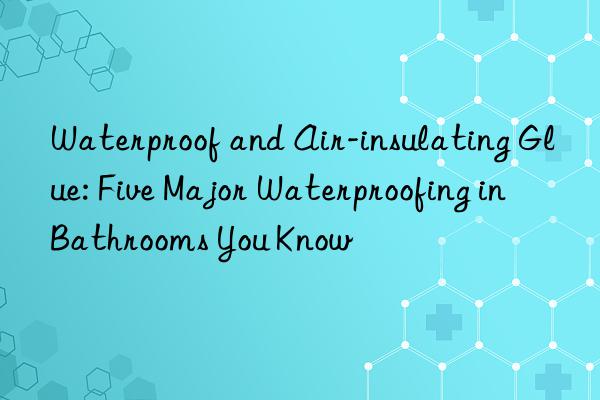
The bathroom is a very important part of people's daily lives. How can we waterproof it to prevent leakage? How to pay attention to waterproofing issues during bathroom decoration? During the waterproof decoration process of the bathroom, the following points must be paid attention to:
1. Try not to damage the original waterproof layer
In newly delivered buildings, the floors of toilets, bathrooms and kitchens have waterproof layers made in accordance with relevant standards. Therefore, leakage will generally not occur after moving in without destroying the original waterproof layer. A common problem currently is that during the renovation, some bathroom shower facilities will be added and various water supply and drainage pipelines will be restructured or moved. The original waterproof layer of the building has been seriously damaged, but there is no repair or new waterproofing construction. , so that the problem was discovered only after leakage occurred.
Experience: The waterproof layer is easily damaged when the floor is renovated. If not repaired in time, leakage will occur in the future, affecting neighbors. Therefore, attention should be paid to protecting the waterproof layer during decoration. If it is accidentally damaged, repair it in time to avoid leaving hidden dangers.
2. Make the floor waterproof when re-laying floor tiles
If you need to replace the original floor tiles in the bathroom, cut out the original floor tiles , the ground must be leveled with cement mortar first, and then waterproofed. This can prevent leakage caused by uneven thickness of the waterproof coating. Before doing waterproofing, be sure to clean the ground and apply waterproof paint 2 to 3 times.
Experience: The joints between the wall and the ground and the joints between the pipes between the water supply and the water are places where problems are prone to occur. Workers must be urged to deal with these. Waterproof coating must be applied to every corner. The decoration team is required to provide cement mulch for the upper and lower water pipes in the kitchen and bathroom, and apply 10 to 20 cm of waterproof coating from the ground upward. Then redo the waterproof layer on the ground and add the original waterproof layer to form a composite waterproof layer. Enhanced water resistance.
3. The wall must be waterproof
When showering in the bathroom, water will splash onto the adjacent wall. If there is no waterproof layer The adjacent wall and the opposite corner wall are prone to moisture and mildew. Therefore, it is necessary to waterproof the wall before laying the wall tiles. In general waterproofing treatment, the wall needs to be waterproofed to a height of 30 centimeters, but for non-load-bearing light walls, the entire wall must be waterproofed, and it must be at least 1.8 meters high.
Experience: The waterproof wall adjacent to the shower location must also be 1.8 meters high. If a bathtub is used, the height of the waterproof coating on the wall adjacent to the bathtub should also be as high as the bathtub. upper edge.
Fourth, use the 24-hour "water storage experiment" to check the waterproofing
After the waterproofing project is completed, seal the door and drain, fill the bathroom floor with water to a certain liquid level, and mark it. If the liquid level does not drop significantly within 24 hours, especially if the roof of the house downstairs does not If leakage occurs, the waterproofing will be passed. Such asIf it fails the acceptance, the waterproofing project must be completely redone and then re-accepted.
Experience: Regarding the acceptance of lightweight wall waterproofing construction, a water spray test should be adopted, even if a water pipe is used to spray continuously from top to bottom on the wall with waterproof coating Shower for 3 minutes, and after 4 hours, check whether there is penetration on the other side of the wall. If there is no penetration, the wall waterproof construction is deemed to have passed the acceptance.
5. The water pipe grooves in the wall must also be waterproof
During the construction process, when pipes, floor drains, etc. pass through the floor, their The waterproof layer around the hole must be carefully constructed. The water pipes should be buried in the wall and have a reasonable structure. When laying water pipes, always make grooves larger than the pipe diameter. The grooves should be plastered smoothly, and then the grooves should be painted with waterproof paint.
Experience: The floors of kitchens and bathrooms must have slope-oriented floor drain openings. Increase the slope appropriately. When decorating pipes in kitchens and bathrooms, try to avoid changing the original drainage and sewage pipes and floor drains. position to prevent leakage caused by re-arranging pipes and cutting floor slabs to damage the waterproof layer. </p

 微信扫一扫打赏
微信扫一扫打赏

